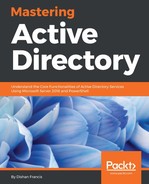My local library in Kingston has a collection of nearly 10,000 books. These books cover many different subjects. When I walk into the library, I can see that there are signs hanging from the ceiling to guide you to the different book sections, such as novels, politics, arts, technology, cooking, and so on. So, if you know the type of the book you looking for, you can easily go to the relevant section. Most of the time, I end up in the cooking or history sections. Each of these sections has multiple bookshelves. These bookshelves are further categorized into subcategories. At the top of each bookshelf, there is a sign to describe which subcategory it belongs to. As an example, the history section has bookshelves with categories such as Europe History, Asia History, World History, and so on. This makes book selection even easier, as now you know exactly which bookshelves to look for. When you go to the bookshelf, the books are usually organized in alphabetical order. Each book has a small label indicating the first character of the book title. If I am looking for a book on British History, I can look at the books with the label B. So out of 10,000 books, within a few minutes, I can locate a book I need. If it's not structured, I will have to spend hours to find books. This doesn't benefit only the members; when the library receives new books, employees know exactly where to rack those up as there is a defined system in place for everyone to follow.
The Kingston library for children is in a different building from the main one. I usually have to bring my daughter there. But in there, the books are not categorized in the same way as it's obvious that kids' books are mostly stories. Books there are mainly divided based on age groups. Then, bookshelves are further categorized based on alphabetical order. When I go there, I spend more time in book selection than main library because a category contains more books. Plus, there is another problem: the children's library has a reading corner, so children can pick books from the shelves and read them there. But when they return the books to the shelves, they do not follow the same rules as they are too young to understand these. Therefore books end on up different shelves than where they should be. Both libraries have their own ways of categorizing books. In the main library, it was easier to locate a book than in the children's library. So, just having a structured system is not going to give the same output. It depends on the way it was designed and, more importantly, the way it was maintained.
In Active Directory, there can be hundreds or thousands of objects based on the organization size. Each of these objects has different operation and security requirements. We do not manage a user object in the same way as we manage computer objects. In the preceding library example, the structured environment helped locate a book easily from lots of a similar type of objects. It also helps the administration maintain the library service with integrity. In the Active Directory environment, organizational units (OUs) allow engineers to categorize objects into smaller administrative boundaries based on the object class and administration requirements. In this chapter, we are going to look into the following topics:
- What needs to be considered when designing the OU structure?
- How to choose the OU structure model needed for a business
- How to manage the OU structure
